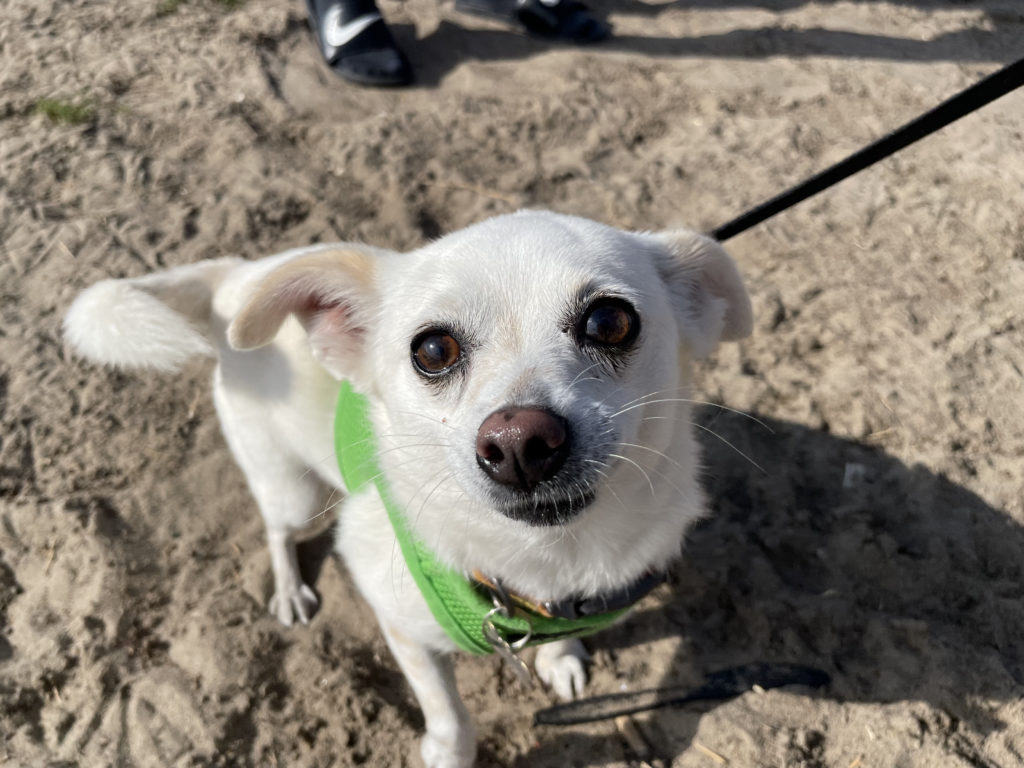Helping a Dog Who Does Not Like Having the Leash Attached
By: David Codr
Published Date: December 23, 2021
For this Venice Beach dog training session we worked with Fiona, a five-year-old Pomeranian mix that does not like having the leash attached.
We started up the session by going over dog behavior communication and dog training fundamentals. Using marker words, rewarding with good timing and making sure that the dogs physical and mental needs are being met are all crucially important.
Fiona had a few different things that upset her; walking down the busy alley next to her home, having her harness put on or attaching the leash. I have worked with a number of dogs who are fearful of the leash or harness because of a negative association.
Because Fiona is not a fan of walking through the alley next to her house, and that activity consistently follows having her harness put on or leash attached, I’m pretty certain that the undesireable association of these activities have become linked to the harness and leash.
I decided to use a conditioned emotional response or CER to help Fiona get over her fear of the harness. We practiced for a few minutes but it quickly became clear that Fiona hates her harness! We made some progress but I recommended the guardian pick up another harness. Not only will a new harness not have the negative associations, a different configuration will make it easier to put it on and take it off.
Later in the session, we were going to head out for a walk when I spotted Fiona displaying an anxious behavior towards the leash. I walked Fiona‘s guardian through the same exercise to help the dog feel relaxed with the leash. If you have a dog that is fearful of a harness or leash, you should check out the free positive dog training video below.
The great thing about using a CER to stop a dog from being afraid of something is that we’re doing it in small segments. Instead of having the leash put on and then going for a walk, we’re just asking the dog to look at the leash to receive a reward. Over time, the dog develops a positive association with the object. Eventually, they start to lean in towards it when it is presented and after enough practice, the dog sees the harness as a very positive thing and something to look forward to. This is a great way to stop a dog who doesnt like having the leash attached.
You can use this secret to help a dog get over fear of the leash or just about anything else. I’d like to see Fiona‘s guardian practicing in short, one minute practice sessions a few times a day until she is wagging her tail and moving towards the harness or the leash when she sees it.
I tried to work on a few other issues that Fiona had but when she bit my finger while offering a treat, it became clear that we had pushed a little bit too far. This was a good reminder that I learned years ago as a Dog Behavior expert, when you’re working on dog behavior modification, it’s important to go in slow, successful steps. In other words, dont get greedy, lol.
I wrapped up the session by filming a roadmap to success summary video to help the guardian remember all of the dog behavior tips we shared in this in-home Venice Beach dog training session.
Categorized in: Dog Behavior


